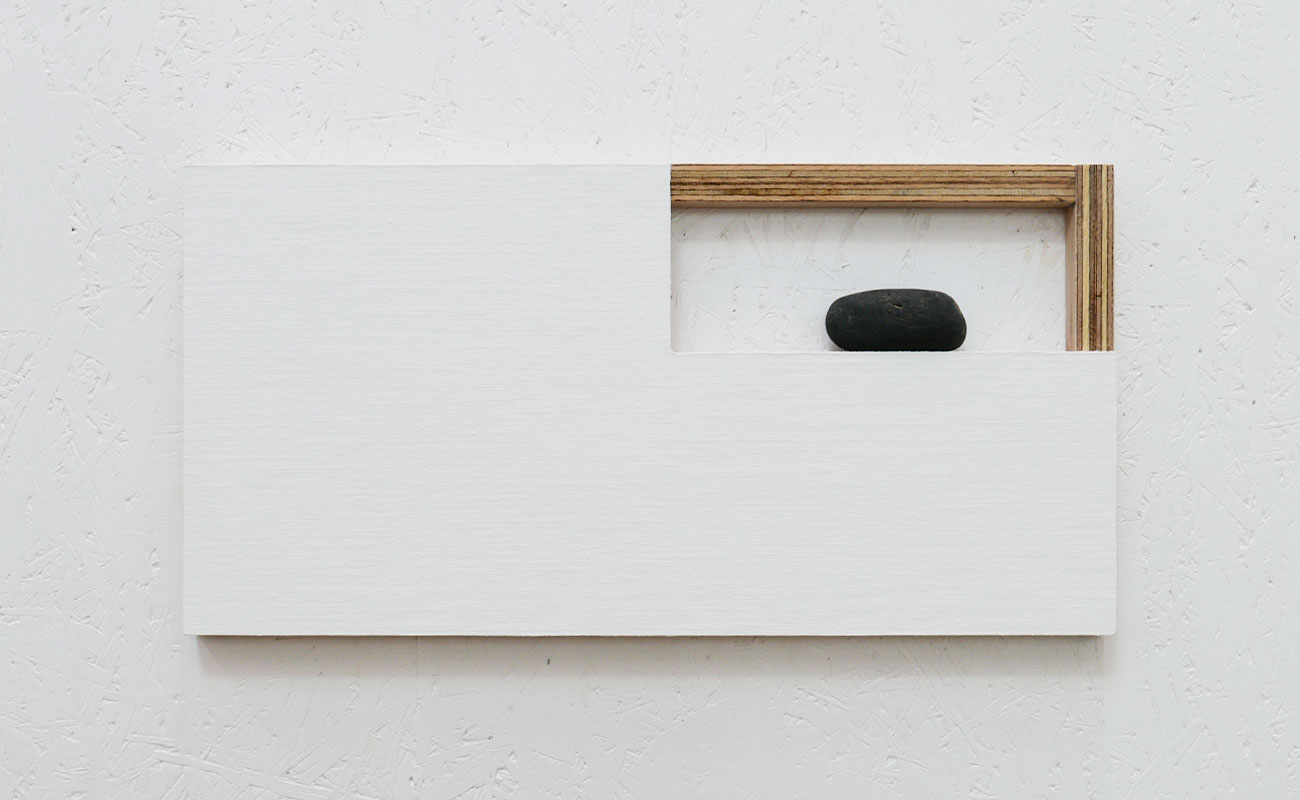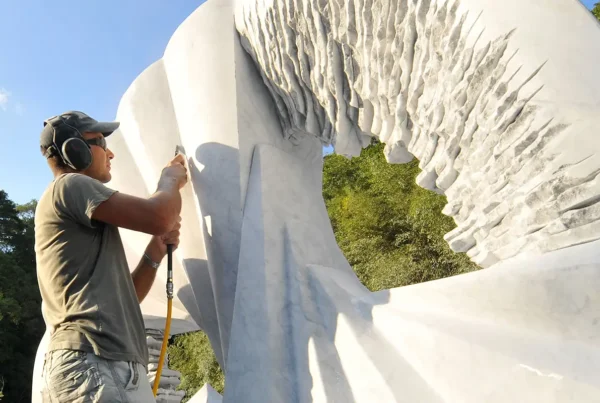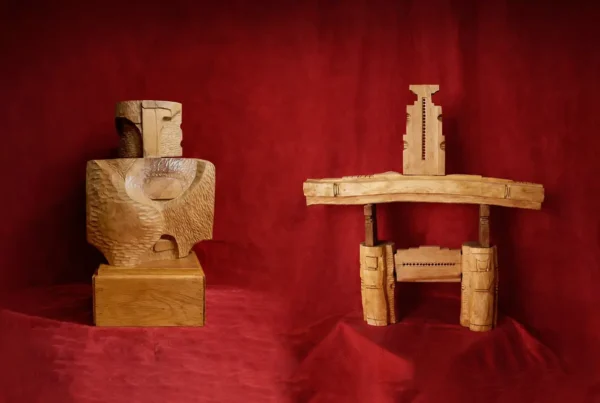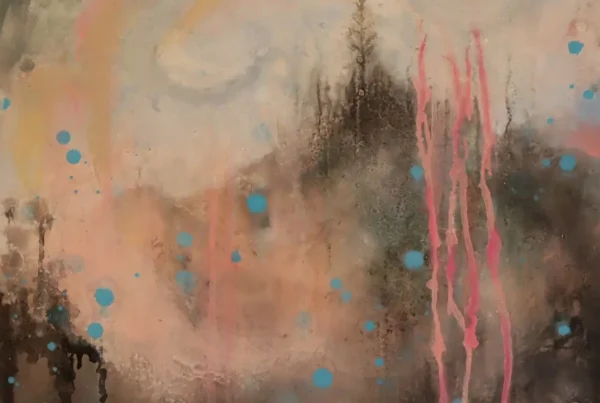“All my life I’m involved in art. I couldn’t live without it. In any case, it has given me many beautiful moments and brought me into contact with fascinating people.”
Chance and Indeterminacy in Paul Corvers’ Recent Work
Paul Corvers commenced his artistic journey in 1977, coinciding with the advent of Neue Wilden, a neo-expressionist movement in Germany. Corvers’ initial attraction towards this movement and American abstract expressionism is not uncommon. However, over the years, the echoes of Piet Mondrian’s modernism grew louder, leading to a departure from the grand gestures of painting and intricate applications of color. For an extended period, the horizon and landscape served as guidance for viewers examining Corvers’ abstract compositions.
In his recent works, Corvers composes paintings comprising numerous color areas, ranging from large to small at first glance, the paintings appear to be executed in a hermetic and complex language, implying a well-planned and precise process. Further inspection suggests the influence of two principles championed by the celebrated American avant-garde composer, John Cage (Los Angeles 1912-1992 New York): chance and indeterminacy. Drawing inspiration from Zen Buddhism, Cage crafted music that focused solely on the pure experience of sound as sound, devoid of emotional expression or coherent structure.
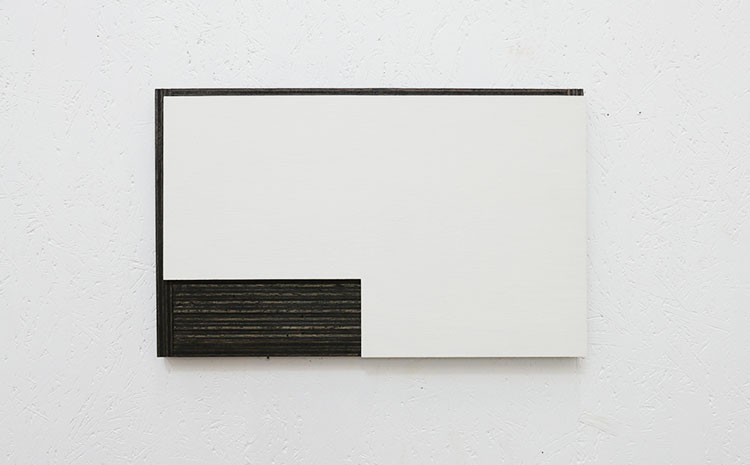
The Role of Materiality in Paul Corvers’ Creative Process
Similarly, Corvers’ recent work appears to abandon figurative elements in favor of pure, abstract compositions constructed from clear color fields determined by chance and indeterminacy. In this regard, Corvers’ process is akin to Mondrian’s intuitive yet harmonious compositions. While Neue Wilden presented themselves as highly expressive painters, unencumbered by dogmas and working with complete freedom, Corvers has reached this stage through a different creative journey. The essence of painting is distilled to its bare minimum, resulting in color areas on the canvas that refer only to themselves, entirely at peace with one another. The outcome is a sense of tranquil silence, particularly evident in the small format which reveal a monumental grandeur. This echoes Cage’s assertion that “There is no such thing as an empty space or an empty time. There is always something to see, something to hear. In fact, if we’re trying to produce silence, we cannot.” Corvers’ art celebrates the freedom to create a void rich in imagery and sound.

From Abstract Expressionism to Minimalism
Paul Corvers has been focusing on crafting minimalist compositions on canvas or panel with a pre- determined rectangular format for the past few years. However, he has recently noticed a gradual shift in his approach. He has observed that the materiality of the panel, wood, or multiplex that he utilizes has started to assume a more significant role in his creative process. This dynamic interplay between the construction and the materials utilized imbues his works with an added dimensionality, rendering the physicality of the piece a vital component of the final product. After reflecting on his works, Paul holds a deep appreciation for the ones he has produced over the past two years, because they show a development that again offers opportunities and challenges to go further.
Paul Corvers, having previously worked in relatively spacious studios, now finds himself in a small 30 square meter workspace. With the inclusion of various machines, his available space has become limited, prompting him to create pieces of smaller dimensions. Paul recognizes the necessity for additional space to further pursue his exploration of woodworking techniques in his recent works.
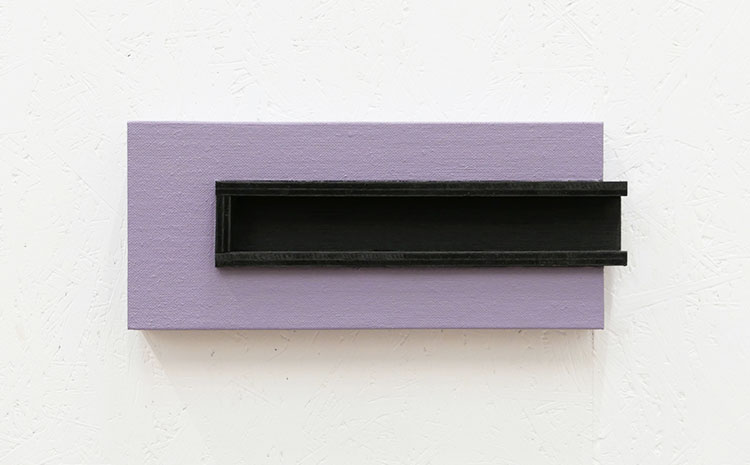
Eastern Influences and Artistic Exploration in Paul Corvers’ Work
Throughout his life Paul Corvers has maintained an unwavering desire to paint. Despite this steadfast passion, his artistic focus has evolved over the years, transitioning from abstract expressionism to more minimalist and abstract landscapes. He finds that the expansive, serene beauty of natural landscapes serves as a profound source of inspiration. It is not the bustling urban landscape that stimulates his creative drive, but rather the quiet, vast emptiness of nature. When it comes to presenting his art to the world, the context is ultimately inconsequential. He does not actively seek external stimuli to ignite his artistic process; his pieces emerge organically from one another, capable of standing alone even without any external context. Corvers has been involved in the arts for his entire life and cannot imagine living without it, as it has provided him with countless beautiful moments and introduced him to fascinating people.
His work had taken on an Eastern influence, specifically Japanese, due to changes in his career. This observation made by his daughter led him on a quest to explore the cultural and artistic movements of Japan, including the captivating philosophies of wabi sabi and Mono-ha, which he found particularly intriguing. However, he couldn’t help but notice that the representation of these artistic movements in the Netherlands was limited due to its predominant Western orientation, as evidenced by the lack of exposure in galleries and museums. As a result, he harbored a strong desire to participate in an artist-in-residence program in Japan, allowing him to gain unique insights and immerse himself in the country’s artistic milieu, ultimately enriching his own artistic practice.



